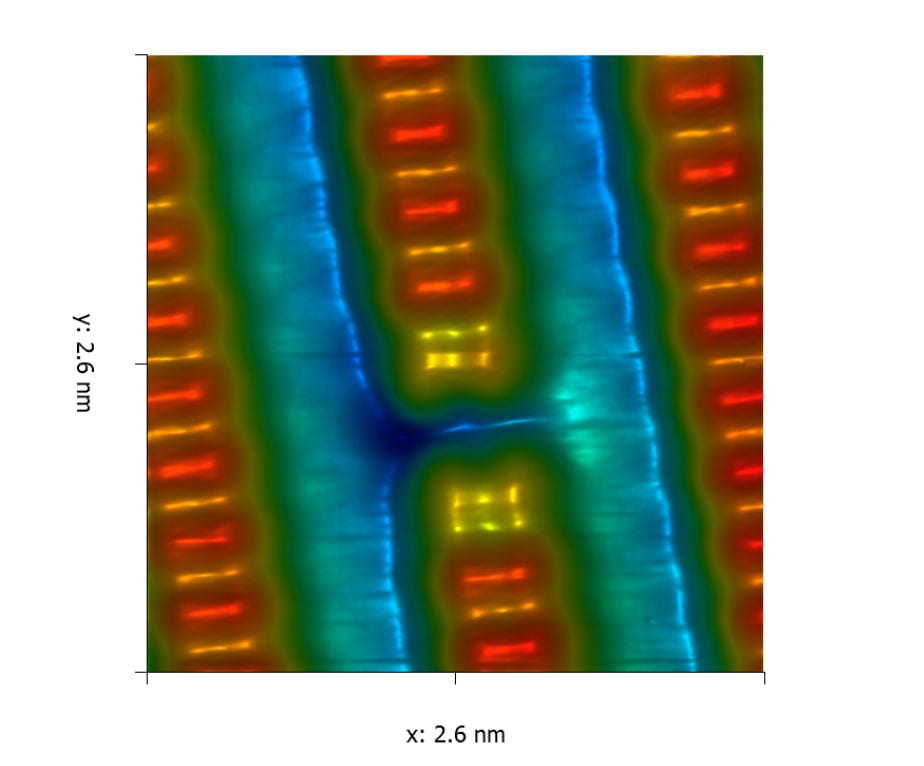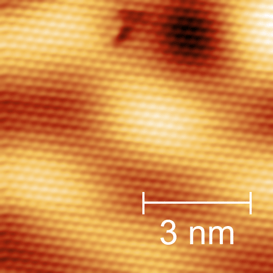
Inside of a vacuum chamber that is as cold and empty as outer space sits a module that allows scientists to image, experiment on, and even pick up and move individual atoms and molecules.
This Low-Temperature Scanning Probe Microscope (LTSPM) is one of the few such tools available in a user facility in the US.
Scanning Probe Microscopy (SPM) and Scanning Probe Spectroscopy (STS) are measurement techniques that rely on the interaction of the electronic states of a sharp metal probe with the electronic structure of a sample to be scanned. This interaction is fundamentally quantum-mechanical and through it the detailed topographical and electronic structure of single atoms and molecules on surfaces can be examined. To achieve and maintain atomically clean surfaces with stable arrangements of atoms and molecules, operation at cryogenic temperatures is required. This system can operate in both SPM modes:
- Scanning Tunneling Microscopy (STM): Tracks changes in tip-to-sample tunneling current to measure atomic-scale surface features (STM) and electrical properties (STS) of conductive samples.
- Atomic Force Microscopy (AFM): Tracks changes in cantilever vibrational frequency to trace the force on a probe whose tip is often formed by attaching a single molecule of carbon monoxide to probe the size, shape, and even molecular bonding of conductive or nonconductive molecules.
[expand title=”System Specifications”]
- LN2 (77K) and LHe (4.2K) operation
- Ion-pumped prep and analysis chambers with base pressures < 10-10 mbar
- Auger electron analyzer in prep chamber
- Compatibility with qPlus probes to perform simultaneous STM and AFM measurements
- 2.3T superconducting magnet for spin transport studies
- Very low helium consumption: 4 liters in 72 h guaranteed, more than 100 h achieved (4 days!)
- Very low nitrogen consumption: 14 l in 72 h guaranteed, more than 86 h achieved
- Scan range: 1.4 µm (X, Y) / 0.2µm (Z) at 5 K, 5x larger at RT
- Maximum resolution: 1 pm
- Tunneling current: > 1 pA (Femto DLPCA200) / > 100 fA (Createc internal preamplifier)
- Very small drift: < 1 Å/h in thermal equilibrium
- Spectroscopy: I/V, dI/dV, d2I/dV2 with external / internal Lock-in amplifier
[/expand]
For more information, please contact Walter Henderson at walter.henderson@gatech.edu






